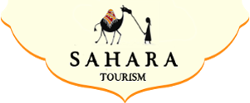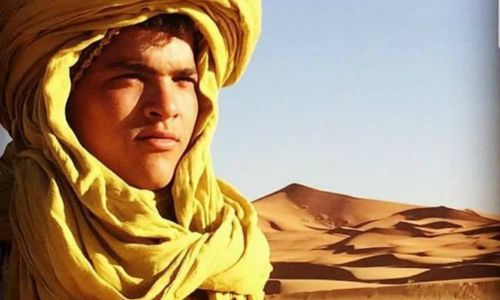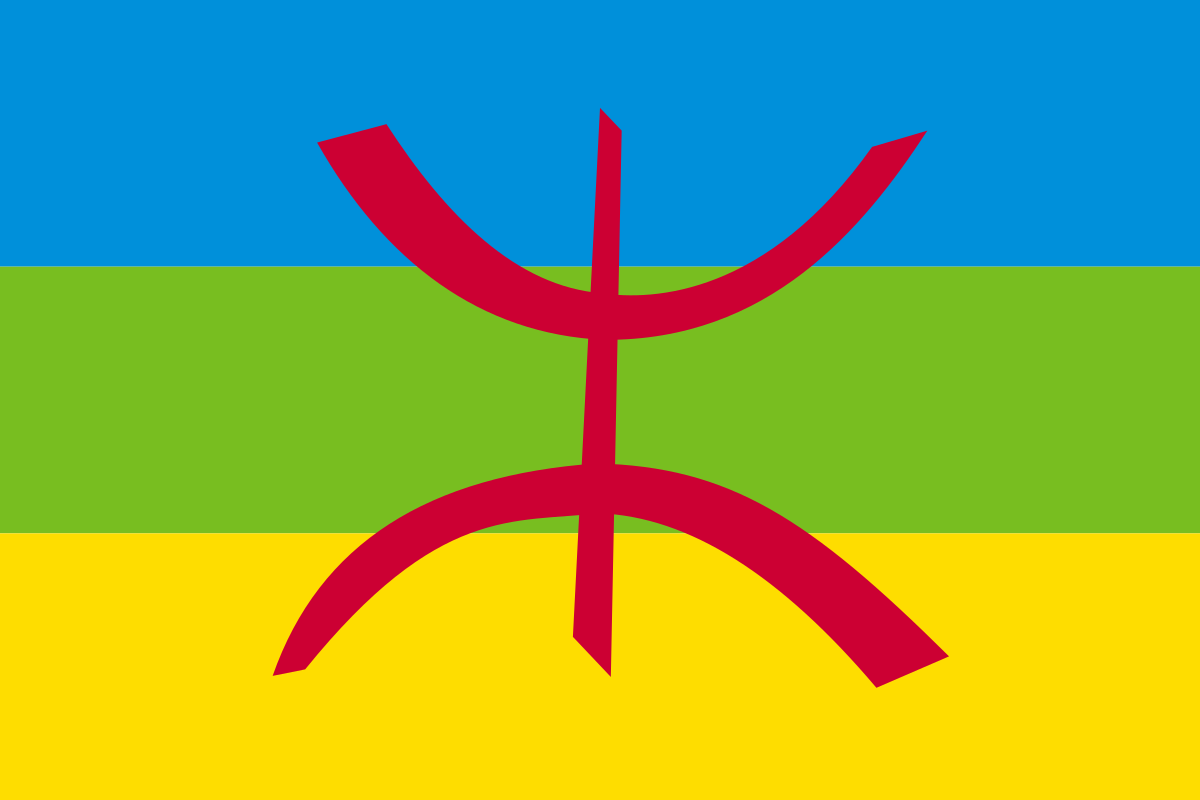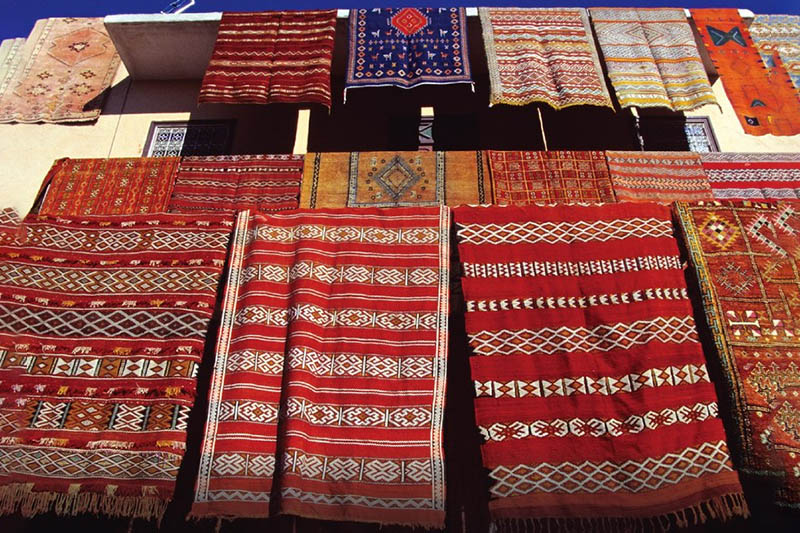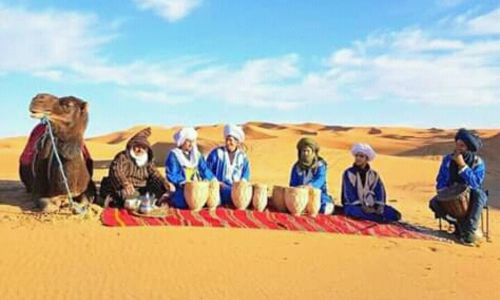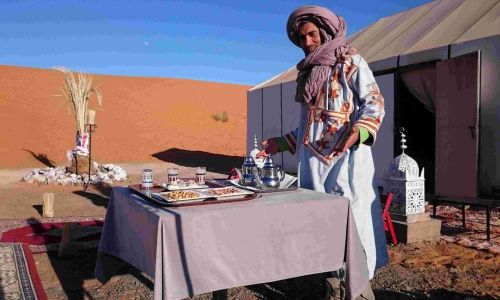Craftsmanship occupies an important place among Berber populations. It is one of the most widespread trades:
Ceramics for the manufacture of plates, jugs, and jars necessary for daily life. Weaving wool for carpets, clothes or blankets, and khaimas (nomadic tents). Metal and silver work for the magnificent Berber jewelry and the famous Azlag daggers, named after this douar situated at the exit of Kelaat El M’Gouna and the Valley of the Roses.
Carpet styles and symbols
Traditional Berber carpets contain distinctive patterns and colors and are woven from sheep’s wool or camel hair (you can also find them made from nylon and olefin material). The materials are hand-washed and naturally dyed from saffron yellow to wild mint green and from pomegranate and henna. These rugs are known for their strong geometric designs and have been dated dating back to the Marinid era (Berber dynasty). Carpets in the Middle Atlas generally have a diamond grid.
– Amazigh textiles, due to the relative isolation of the tribes in rural areas, have preserved ancient weaving techniques and mystical symbolism. In this society, even the wool itself has special protective powers.
– Berber tribes developed a variety of textiles to be adaptable to different climates. Carpets in the mountains have larger loops, they are looser to protect from the cold. In warmer climates, the carpets are made of a finer weave.
– Berber weaving is highly dependent on women and is traditionally passed on within the home. The young apprentice is expected to learn the different looping techniques, patterns, color ranges, and motifs. Historically, women wove carpets for their families, and men traditionally produced carpets that were more specialized as professional master weavers.
